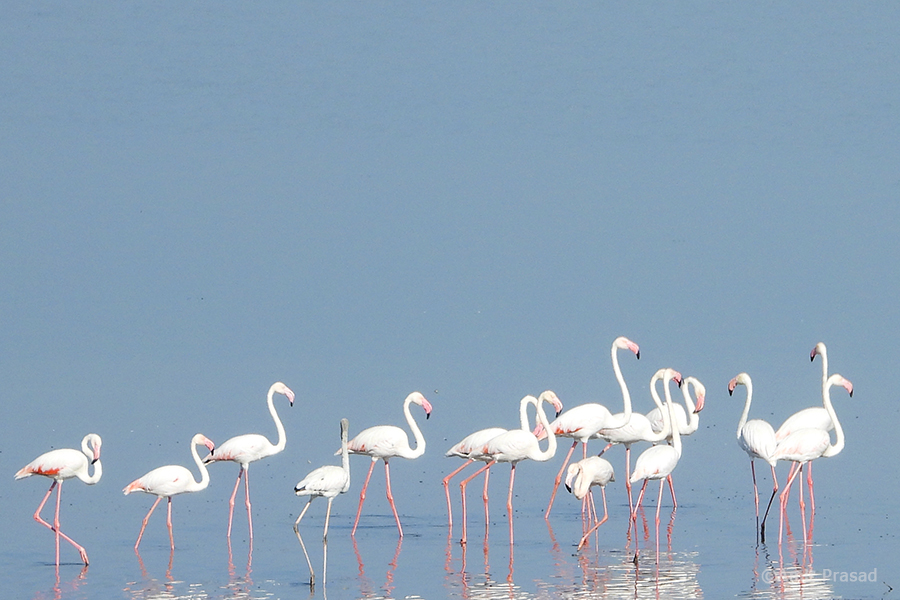Little Rann of Kutch

About Little Rann of Kutch
Welcome to one of the most fascinating and unique landscapes in the entire world. Little Rann of Kutch in Gujarat, covers an area of 4954 sq. km. It is home to popular wild ass sanctuary located in this Rann. Known as Asiatic Wild Ass orKhur this species is one of the most endangered species in the world. To preserve the natural habitat of the area, this park was established as a sanctuary on 12th January 1973. Itis the 15th Biosphere Reserve in India frequented by flocks of migratory birds year-round thanks to its conducive geographical location. Migratory birds enroute this area and love to touch base with the dynamic Gulf of Kutch.
Besides the migratory birds abode, this sanctuary also provides conducive environment to a variety of other avian lives. There are many unexplored parts of the Little Rann of Kutch which is known to providing ideal breeding grounds for flamingos. The saline desert plains, rocky and thorn scrub, arid grasslands, plateaus to lakes, and marshes all constitute the area of this part of the versatile, and diversely fertile land making it an ideal ground for species to thrive in. Especially the plateaus of which there are around 74 provide the natural breeding ground for animals and various other life forms. These islands are locally called bets and large ecotone, transitional land. It is a type of land where two different ecosystems gradually meet. In this part of Gujarat both marines as well as terrestrial life forms thrive. This place also attracts a lot of rains during monsoons leading to floods. It is a key breeding place for prawns and a variety of sea lives, turtles, and fishes thanks to the mixing of tidal water from the Gulf of Kutch with the water from the rivers flowing in this area. The saline constitute of the area also makes for large salt panes. This area attracts many salt manufacturers. These manufacturers are locally known as ‘Agarias’ and engage in the occupation of preparing salt.
Fauna & Flora
This area is a transitional land spread across the Little Rann. Many of plateaus and islands known as ‘bets’, grow jungle grass and scrub and native plants. The greenery and bushes of this arile land also offers plenty of food for its variety of wildlife including the ‘Gudkhur’ (Asiatic wild ass) which thrive in this place. This khur species of wild ass is an endangered species and is not found elsewhere. It is a pleasant looking earthy brown member of the Equus genus (horse family). Catching the sight of playful ass in the herd, grazing, and galloping across the Rann is a treat for people visiting this area. Besides the khur, it also attracts pretty looking blackbuck (Indian antelope), nilgai or blue bull (India’s largest antelope), and the peaceful, playful herd of chinkara (Indian gazelle). These are some of the mammals found in the bets.
The hiding ground and construct also make it home to hunting animals of the wild such as the endangered Indian wolf, desert fox, and Indian fox. Indian jackals, desert and jungle cats, and a few hyenas species can also be found in this natural habitat of animals.
The mammals which serve as the prey to hunting animals are hares, gerbilles, and hedgehogs. Nature lovers can catch the sight of reptiles like a spiny-tailed lizard, monitor, red, and common sand boa. Varieties of venomous and non-venomous snakes like a saw-scaled viper, cobra, dhaman (Indian rat snake), etc, could also be seen during the safaris in the Rann.
Request a Quote
Other ways to contact
Email us
tour@wildusk.com
Call Us
8860337105, 9354454203
